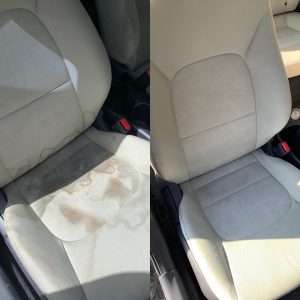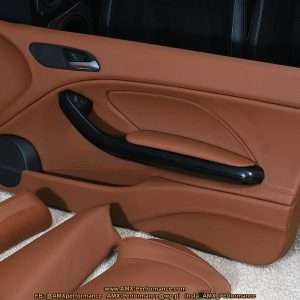What is Car Interior Soap?
Car interior soap is a specially formulated cleaning product designed to safely and effectively clean the various surfaces inside your vehicle. It’s different from regular household cleaners. It’s made to be gentle on materials like leather, vinyl, plastic, and fabric. It removes dirt, grime, and stains without damaging the delicate surfaces. It’s a must-have for any car enthusiast.
It’s important to choose the right soap for the specific material you’re cleaning. Some soaps are designed for leather, while others are better suited for fabric or vinyl.
Why Use Car Interior Soap?
Using car interior soap offers several benefits. It helps maintain the appearance and value of your vehicle. Regular cleaning prevents the buildup of dirt and grime. This can damage the interior surfaces over time. It also creates a more pleasant and hygienic driving environment. Who wants to drive around in a dirty car?
Benefits of Using Car Interior Soap:
- Removes dirt, grime, and stains effectively.
- Protects interior surfaces from damage.
- Maintains the value of your vehicle.
- Creates a cleaner and more comfortable driving environment.
How to Use Car Interior Soap
Using car interior soap is a straightforward process. First, vacuum the interior to remove loose dirt and debris. Next, dilute the soap according to the manufacturer’s instructions. Apply the solution to a microfiber cloth and gently wipe down the surfaces. Finally, wipe away any residue with a clean, damp cloth. Let the surfaces air dry.
Step-by-Step Guide:
- Vacuum the interior thoroughly.
- Dilute the soap as directed.
- Apply to a microfiber cloth.
- Wipe down surfaces gently.
- Wipe away residue.
- Allow to air dry.
FAQ: Frequently Asked Questions
Choosing the Right Car Interior Soap
Selecting the right car interior soap is crucial for achieving optimal cleaning results without damaging your vehicle’s surfaces. Consider the type of materials you’ll be cleaning. Leather requires a specialized cleaner and conditioner. Fabric and vinyl can often be cleaned with a more general-purpose interior cleaner. Read the product labels carefully. Look for soaps that are pH-balanced and free of harsh chemicals.
Factors to Consider:
- Material Compatibility: Ensure the soap is safe for the specific materials in your car.
- pH Balance: Opt for pH-balanced formulas to prevent damage.
- Chemical Composition: Avoid harsh chemicals that can fade or discolor surfaces.
- Scent: Choose a scent you find pleasant, or opt for an unscented option.
A little research goes a long way. Reading reviews and comparing products can help you make an informed decision.
Dealing with Stubborn Stains
Sometimes, regular cleaning isn’t enough to remove stubborn stains. For tough stains, you may need to use a specialized stain remover. Act quickly! The longer a stain sits, the harder it will be to remove. Blot the stain with a clean cloth to absorb as much of the liquid as possible. Then, apply the stain remover according to the manufacturer’s instructions.
Tips for Removing Stubborn Stains:
- Act Quickly: The sooner you address the stain, the better.
- Blot, Don’t Rub: Rubbing can spread the stain and damage the fabric.
- Use the Right Product: Choose a stain remover specifically designed for the type of stain you’re dealing with.
- Test in an Inconspicuous Area: Always test the stain remover on a hidden area first.
Protecting Your Clean Interior
Once you’ve cleaned your car’s interior, it’s important to take steps to protect it from future dirt and damage. Consider using seat covers to protect your seats from spills and stains. Use floor mats to trap dirt and debris. Regularly vacuum the interior to prevent the buildup of dirt. Apply a protectant to vinyl and plastic surfaces to shield them from UV damage.
Preventative Measures:
- Use seat covers.
- Use floor mats.
- Vacuum regularly.
- Apply a UV protectant.
Taking these simple steps can help keep your car’s interior looking its best for years to come. A little prevention is worth a pound of cure!
DIY Car Interior Soap Alternatives (Use with Caution!)
While commercially available car interior soaps are generally recommended, there are some DIY alternatives you can try in a pinch. However, proceed with extreme caution! These alternatives may not be suitable for all materials and could potentially cause damage. Always test in an inconspicuous area first.
Possible DIY Options (Test First!):
- Diluted White Vinegar Solution: Mix a small amount of white vinegar with water. This can be effective for removing some odors and light stains.
- Baking Soda Paste: Create a paste of baking soda and water. This can be used to absorb odors and lift some stains.
- Mild Dish Soap (Extremely Diluted): If you must use dish soap, use only a tiny amount diluted in a large volume of water. Rinse thoroughly.
Remember, these are just suggestions, and their effectiveness and safety can vary. When in doubt, stick with a product specifically designed for car interiors.
Essential Tools for Car Interior Cleaning
Having the right tools can make car interior cleaning much easier and more effective. A good vacuum cleaner is essential for removing loose dirt and debris. Microfiber cloths are ideal for wiping down surfaces without scratching them. A soft-bristled brush can help loosen dirt from textured surfaces. A detailing brush is useful for cleaning tight spaces and crevices.
Recommended Tools:
- Vacuum Cleaner (with attachments)
- Microfiber Cloths
- Soft-Bristled Brush
- Detailing Brush
- Spray Bottle
- Bucket
Investing in quality tools will not only make the cleaning process easier but also help you achieve better results. Don’t skimp on the microfiber cloths!
Addressing Specific Interior Areas
Different areas of your car’s interior require different cleaning approaches. The dashboard, for example, is prone to dust and UV damage. Use a protectant specifically designed for dashboards. Carpets and upholstery can accumulate dirt, stains, and odors. Use a carpet cleaner or upholstery cleaner to deep clean these areas. Windows and mirrors can be cleaned with a glass cleaner.
Cleaning Specific Areas:
- Dashboard: Use a dashboard protectant to prevent cracking and fading.
- Carpets/Upholstery: Use a carpet cleaner or upholstery cleaner to remove stains and odors.
- Windows/Mirrors: Use a glass cleaner for streak-free results.
- Leather Seats: Use a leather cleaner and conditioner to maintain their suppleness.
Pay attention to the details. Cleaning the small areas can make a big difference in the overall appearance of your car’s interior.
The Importance of Ventilation
Proper ventilation is crucial during and after cleaning your car’s interior. Open the windows and doors to allow fresh air to circulate. This will help to dry the surfaces quickly and prevent the buildup of mold and mildew. It will also help to dissipate any lingering odors from the cleaning products.
Ventilation Tips:
- Open windows and doors during cleaning.
- Use a fan to circulate air.
- Leave the windows slightly open after cleaning to allow for continued ventilation.
Don’t underestimate the power of fresh air! It’s a simple but effective way to improve the air quality inside your car.
Maintaining a Fresh Scent
After cleaning your car’s interior, you’ll want to maintain a fresh and pleasant scent. There are several ways to achieve this. You can use air fresheners, car diffusers, or even natural options like essential oils. Choose a scent that you find appealing and that complements the overall cleanliness of your car.
Scent Options:
- Air Fresheners
- Car Diffusers
- Essential Oils (use with caution and proper dilution)
- Baking Soda (to absorb odors)
A clean car should smell as good as it looks! A pleasant scent can enhance your driving experience.
Remember to add the CSS styling to your page to achieve the colored background, rounded corners, shadow, inner padding, and distinctive element (like a colored stripe) for the `info-block` and `callout` classes. Also, add styling for the `faq-question` and `faq-answer` classes to visually separate the questions and answers in the FAQ section. For example:
css
.info-block {
background-color: #f0f8ff; /* Light Blue /
border-radius: 10px;
box-shadow: 0 4px 8px rgba(0, 0, 0, 0.1);
padding: 20px;
margin-bottom: 20px;
border-left: 5px solid #4682b4; / Steel Blue Stripe /
}
.callout {
background-color: #ffffe0; / Light Yellow /
border-radius: 5px;
padding: 10px;
margin: 10px 0;
border-left: 3px solid #daa520; / Goldenrod Stripe */
font-style: italic;
}
.faq-question {
font-weight: bold;
margin-top: 10px;
}
.faq-answer {
margin-bottom: 10px;
}




